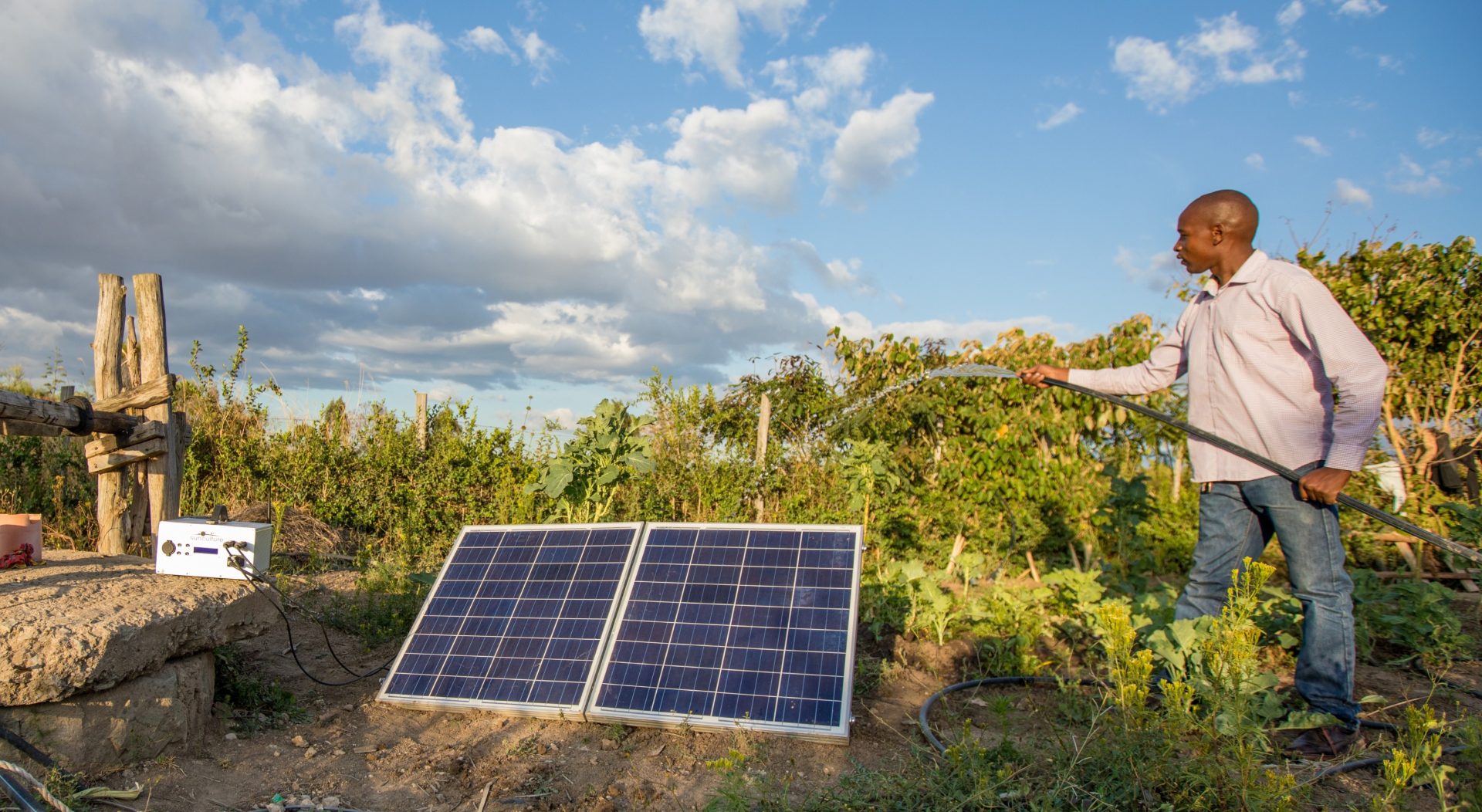We welcome the publication of Evaluating the Impact of BII’s Industries, Technology and Services (ITS) Portfolio, an independent portfolio-wide analysis of our investments in this sector group.
This report is the third in the FCDO-BII Evaluation and Learning Programme of independent multi-year evaluations across our three sector groups. It follows the evaluation of our Financial Institutions Portfolio, published in 2021 and the evaluation of our Infrastructure Portfolio published in 2022 – and means that BIIs entire post-2012 portfolio[1] has now been subject to independent evaluation.
These longer-term portfolio-wide evaluations draw out lessons which support internal learning and are critical to help us and FCDO better understand how our investments deliver impact. They are intended to scrutinise the evidence base which underpins our work. This then helps us target investments and track results in those businesses and sectors where we can have the most impact and can be used to inform our portfolio management and investment decisions.
Our investments within the ITS sector group cover a diverse set of businesses spanning food and agriculture, manufacturing, digital technology, consumer and business services, health, education, and construction and real estate. They are aimed at creating jobs, improving access to basic goods and services, improving access to markets, supporting the transition to net zero and enabling growth.
We are pleased the evaluation highlights evidence of our ITS portfolio’s contribution to productive, sustainable, and inclusive development. This includes:
- supporting over 350,000 jobs in Africa and South Asia in 2022, and over a million indirect jobs in supply chains and through wage-induced spending.
- improving access to basic goods and services, including large-scale reach through tech-enabled solutions in food and agriculture and health (11.1 million farmers and 8.6 million patients reached in 2022 with digital solutions).
- improving environmental sustainability including through market-leading efficiencies in energy and water consumption, in our construction and real estate portfolio.
It also highlights a propensity to invest in countries where there is greater fragility and economic need in line with our inclusion goals.
The evaluation makes a range of important recommendations for BII to consider, taking into account: our overall portfolio composition across all three sector groups; investment and portfolio performance (to enable us to recycle capital into other impact-generating opportunities); and the range of potential investment opportunities available to invest in. Here we focus on the portfolio-wide recommendations[2], and provide a brief response to each.
1. Increase systematic focus on climate change across the ITS portfolio. The evaluation found an increase in the rate of investments qualifying as climate finance since we introduced our Climate Change Strategy in 2020, with around a quarter of ITS investments qualifying fully or partially as climate mitigation or adaptation finance. It also assessed evidence of our efforts to work with our ITS investees to reduce their carbon footprint. As part of our commitment to Paris alignment, we aim to play a proactive role in supporting a 1.5 degree just transition to net zero by 2050, particularly in harder to abate sectors which are critical to development (such as food and agriculture and manufacturing). We do this by systematically assessing investments for Paris alignment and using the findings to inform how we support our investees. For example, by providing transition finance and/or technical assistance to develop transition plans and implement decarbonisation measures. While this approach is more forward-looking (applied to new investments) it does mean a more systematic focus on climate considerations across our portfolio over time in line with the evaluation’s recommendations.
2. Mainstream gender and diversity considerations more consistently across the portfolio. The evaluation found an increasing number of 2X qualified investments since we first introduced the 2X criteria[3] in 2018, with 27 per cent of commitments qualified as 2X across the ITS portfolio. Our approach to gender-lens investing, set out in our Gender Strategy, includes:
- identifying gender-smart investment opportunities that have high potential to deliver impact for women, using – but not limited to – the 2X criteria.
- working with investeeso encourage them (with technical assistance or in-house advisory where needed) to improve their gender balance and pursue strategies or business models that are more likely to deliver impact for women.
We are careful to prioritise our interventions, focusing on those investments that have the potential for large-scale job creation (and therefore the potential to reach large numbers of female employees), and those sectors and investments where we see very low representation of women. In both cases we work with investees to make gender-focused commitments and implement gender strategies through setting targets, developing action plans, and providing technical support to support the realisation of targets, foster efforts to establish more inclusive cultures, and/or implement strategies to better serve female clients. We are also increasingly working with investees on other aspects of diversity. Our approach to prioritisation is consistent with the evaluation’s recommendation that we focus on investments that lag behind sector expectations for gender equity.
3. Ensure greater intentionality of reaching low-income groups (as distinct from providing more affordable goods and services) and employing low-income groups. The ITS evaluation found that a significant proportion of our investments aim to reach low-income groups. It noted several ways in which our investee partners are providing services to low-income people, including through digital services, healthcare and other consumer and business services. For example, MedAccess works with manufacturers and buyers of critical medical supplies to overcome market failures that result in vital health commodities being more affordable, better stocked or more suited to the needs of communities in Africa and South Asia. In 2022, we introduced our three strategic impact objectives to support productive, sustainable, and inclusive development, alongside our new Impact Score to manage our “strategic impact on a portfolio basis” (a requirement under the Impact Principles of which we are a founding signatory). Since then, we have scored each investment’s inclusive impact potential (including reach to low-income populations) separately to its productive and sustainable impact potential, thereby explicitly identifying reach to low-income groups (people living on less than $6.85/day PPP)[4].
4. Adopt greater intentionality around geographies and supply chains within a particular sector to achieve more ecosystem-level or economy-level intended outcomes; and be purposeful in linking opportunities across sectors to maximise impact. The evaluation questioned the extent to which individual ITS investments link together to create broader impact in a given sector or economy. The broader systems-level impacts of our individual investments are something we actively consider. We also recognise that, in economies or sectors where we have a larger presence, systems-level impacts could potentially be achieved by making complementary investments in companies operating in the same value chain, ecosystem or economy. For example, our recent investments in India’s electric vehicle (EV) market (including Mahindra & Mahindra, Hero Motors and BatterySmart) mean we now have a presence in all segments of the EV value chain and infrastructure ecosystem. We are engaging with MDBs and other DFIs to understand which approaches have been most effective in driving systemic impact, and will consider if, and under what circumstances, such approaches could be applied to specific value chains or ecosystems within our ITS portfolio (recognising that the availability of complementary investment opportunities will likely be a limiting factor).
5. Continue to invest in sector-specific and multi-sector funds. The evaluation highlighted the importance of investing indirectly through funds to deliver impact in areas that are difficult to reach through direct investing alone. These included an ability to reach a broader diversity of countries, economic sectors and type and size of businesses, especially small and medium enterprises, with essential financing to grow their businesses. We welcome the evaluation’s recommendations that we continue to invest in funds as an essential part of our capital toolkit to deliver this impact.
6. Pilot new modes of data collection, analysis and evaluation to address gaps in the development impact data (both qualitative and quantitative). The evaluation raised an important challenge regarding impact data collection and consistency across the diverse and varied ITS portfolio. Our approach to impact data collection has evolved considerably over time and involves several layers of assurance to ensure data quality and accuracy. We create monitoring dashboards for each investment and track key metrics under each dimension of impact set out when we first make the investment. This builds on the portfolio-level metrics (for example, jobs supported) that we collect across all investments on an annual basis. Despite these improvements, we recognise the need, highlighted by the evaluation, to increase the coverage and quality of our existing impact monitoring data (collected from our investees). We also recognise the need to develop new and innovative approaches for collecting impact data directly from end-stakeholders (suppliers, workers, customers and affected communities) in the challenging markets in which we invest. We are expanding our systems and processes to do this. For example, last year we conducted ‘deep dive’ research – focused primarily on inclusive impact – into a sample of our investments in Africa and India. We plan to pilot more of these ‘deep dives’ to gather more evidence of impact across a greater number of investments.
The next phase of the evaluation will now follow with a series of in-depth studies that will consider the impact of selected investments in greater depth. We look forward to continuing to support the evaluators as we enter the second phase of this important evaluation.
Authors:
Stephen Priestly, Managing Director and Head of Industries, Technology and Services
Maria Smith, Managing Director and Chief Impact Officer
[1] Subject to individual cut off dates for each of the evaluations: Dec-2019 (Financial Institutions); Dec-2020 (Infrastructure); and Dec-2022 (Industries, Technology and Services).
[2] There are also seven sector-specific recommendations, which are covered by our responses to the portfolio-wide recommendations, aligned to current strategy or will be considered as part of our strategy process.
[3] The 2X Criteria is a global standard for gender finance. It sets out minimum requirements for women ownership, leadership, employment and/or consumption.
[4] BII use a poverty line of daily individual consumption of $6.85/day, as defined by the World Bank, based on 2017 purchasing power parities (this was previously $5.50/day based on 2011 PPP).











